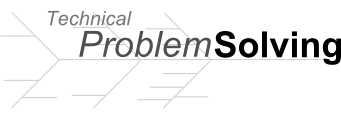Problem solutions can be realized in three ways,
- studying a problem and developing a solution
- small incremental improvements which will ultimately lead to a solution (Kaizen)
- a major break-through (Innovation)
The first is the most common way scientists and engineers tackle technical problems they face. The problem is analyzed, potential solutions are developed, tested and measured to see if they are effective, and ultimately implemented and monitored to insure continuing success. (DMAIC)
The other two approaches have their place in any successful organization and they should be cultivated by management.
The advantage of
Kaizen is that it can be done by anybody in the organization. It many cases it is most effective when those actually doing the work are suggesting and making the changes with the help of engineers or those who have the bigger picture in mind.
Innovation is more of a serendipitous event. There is no formula or process you can follow to have innovation. However you can strive to develop an environment that is fertile for innovation to occur. I'll comment more about this in a later post.
What is your area of strength? Are you the problem solver, continuous improvment person, or an innovator? As individuals, we have a tendency to fall into one or the other area primarily. However you shouldn't neglect the others. If you are a problem solver, take some time to look for minor improvements or do something creative occasionally.
An organization should strive to have a balance of all three. Too many organizations emphasize one at the expense of the others. Innovators may never have a chance to be heard, get frustrated and leave; or perhaps the organization is full of wildly creative people but nothing ever gets off the ground because there aren't people to implement and grind out the solution.
Look at both yourself and your organization. If you are in management, does your organization have all three going on? If you are an individual contributor, are you trying to develop skills in those areas where you are weaker?



